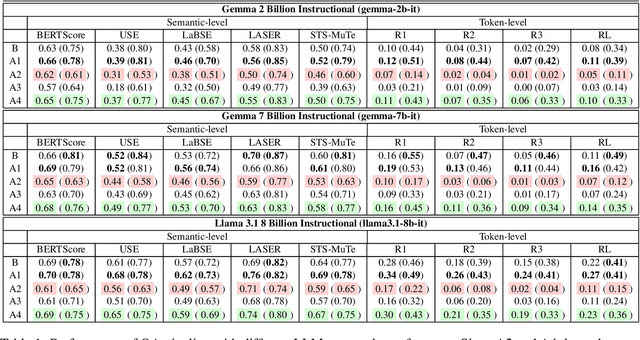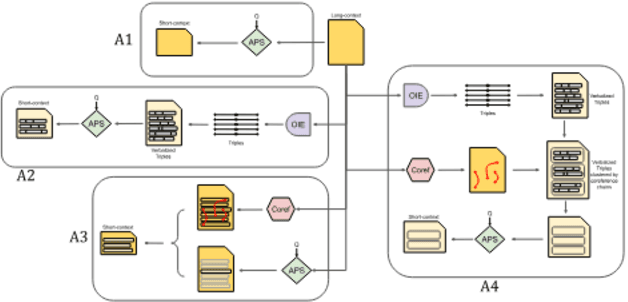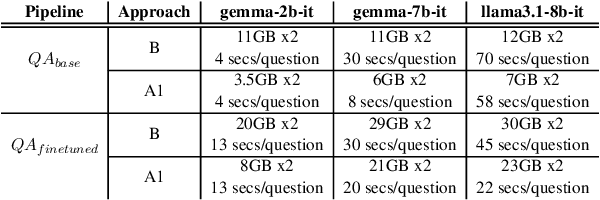Ponnurangam Kumaraguru
LABELING COPILOT: A Deep Research Agent for Automated Data Curation in Computer Vision
Sep 26, 2025Abstract:Curating high-quality, domain-specific datasets is a major bottleneck for deploying robust vision systems, requiring complex trade-offs between data quality, diversity, and cost when researching vast, unlabeled data lakes. We introduce Labeling Copilot, the first data curation deep research agent for computer vision. A central orchestrator agent, powered by a large multimodal language model, uses multi-step reasoning to execute specialized tools across three core capabilities: (1) Calibrated Discovery sources relevant, in-distribution data from large repositories; (2) Controllable Synthesis generates novel data for rare scenarios with robust filtering; and (3) Consensus Annotation produces accurate labels by orchestrating multiple foundation models via a novel consensus mechanism incorporating non-maximum suppression and voting. Our large-scale validation proves the effectiveness of Labeling Copilot's components. The Consensus Annotation module excels at object discovery: on the dense COCO dataset, it averages 14.2 candidate proposals per image-nearly double the 7.4 ground-truth objects-achieving a final annotation mAP of 37.1%. On the web-scale Open Images dataset, it navigated extreme class imbalance to discover 903 new bounding box categories, expanding its capability to over 1500 total. Concurrently, our Calibrated Discovery tool, tested at a 10-million sample scale, features an active learning strategy that is up to 40x more computationally efficient than alternatives with equivalent sample efficiency. These experiments validate that an agentic workflow with optimized, scalable tools provides a robust foundation for curating industrial-scale datasets.
What if I ask in \textit{alia lingua}? Measuring Functional Similarity Across Languages
Sep 04, 2025Abstract:How similar are model outputs across languages? In this work, we study this question using a recently proposed model similarity metric $\kappa_p$ applied to 20 languages and 47 subjects in GlobalMMLU. Our analysis reveals that a model's responses become increasingly consistent across languages as its size and capability grow. Interestingly, models exhibit greater cross-lingual consistency within themselves than agreement with other models prompted in the same language. These results highlight not only the value of $\kappa_p$ as a practical tool for evaluating multilingual reliability, but also its potential to guide the development of more consistent multilingual systems.
Freeze and Reveal: Exposing Modality Bias in Vision-Language Models
Aug 10, 2025Abstract:Vision Language Models achieve impressive multi-modal performance but often inherit gender biases from their training data. This bias might be coming from both the vision and text modalities. In this work, we dissect the contributions of vision and text backbones to these biases by applying targeted debiasing using Counterfactual Data Augmentation and Task Vector methods. Inspired by data-efficient approaches in hate-speech classification, we introduce a novel metric, Degree of Stereotypicality and a corresponding debiasing method, Data Augmentation Using Degree of Stereotypicality - DAUDoS, to reduce bias with minimal computational cost. We curate a gender annotated dataset and evaluate all methods on VisoGender benchmark to quantify improvements and identify dominant source of bias. Our results show that CDA reduces the gender gap by 6% and DAUDoS by 3% but using only one-third of the data. Both methods also improve the model's ability to correctly identify gender in images by 3%, with DAUDoS achieving this improvement using only almost one-third of training data. From our experiment's, we observed that CLIP's vision encoder is more biased whereas PaliGemma2's text encoder is more biased. By identifying whether bias stems more from vision or text encoders, our work enables more targeted and effective bias mitigation strategies in future multi-modal systems.
If Pigs Could Fly... Can LLMs Logically Reason Through Counterfactuals?
May 28, 2025Abstract:Large Language Models (LLMs) demonstrate impressive reasoning capabilities in familiar contexts, but struggle when the context conflicts with their parametric knowledge. To investigate this phenomenon, we introduce CounterLogic, a dataset containing 1,800 examples across 9 logical schemas, explicitly designed to evaluate logical reasoning through counterfactual (hypothetical knowledge-conflicting) scenarios. Our systematic evaluation of 11 LLMs across 6 different datasets reveals a consistent performance degradation, with accuracies dropping by 27% on average when reasoning through counterfactual information. We propose Self-Segregate, a prompting method enabling metacognitive awareness (explicitly identifying knowledge conflicts) before reasoning. Our method dramatically narrows the average performance gaps from 27% to just 11%, while significantly increasing the overall accuracy (+7.5%). We discuss the implications of these findings and draw parallels to human cognitive processes, particularly on how humans disambiguate conflicting information during reasoning tasks. Our findings offer practical insights for understanding and enhancing LLMs reasoning capabilities in real-world applications, especially where models must logically reason independently of their factual knowledge.
MetaGMT: Improving Actionable Interpretability of Graph Multilinear Networks via Meta-Learning Filtration
May 26, 2025Abstract:The growing adoption of Graph Neural Networks (GNNs) in high-stakes domains like healthcare and finance demands reliable explanations of their decision-making processes. While inherently interpretable GNN architectures like Graph Multi-linear Networks (GMT) have emerged, they remain vulnerable to generating explanations based on spurious correlations, potentially undermining trust in critical applications. We present MetaGMT, a meta-learning framework that enhances explanation fidelity through a novel bi-level optimization approach. We demonstrate that MetaGMT significantly improves both explanation quality (AUC-ROC, Precision@K) and robustness to spurious patterns, across BA-2Motifs, MUTAG, and SP-Motif benchmarks. Our approach maintains competitive classification accuracy while producing more faithful explanations (with an increase up to 8% of Explanation ROC on SP-Motif 0.5) compared to baseline methods. These advancements in interpretability could enable safer deployment of GNNs in sensitive domains by (1) facilitating model debugging through more reliable explanations, (2) supporting targeted retraining when biases are identified, and (3) enabling meaningful human oversight. By addressing the critical challenge of explanation reliability, our work contributes to building more trustworthy and actionable GNN systems for real-world applications.
SEMMA: A Semantic Aware Knowledge Graph Foundation Model
May 26, 2025Abstract:Knowledge Graph Foundation Models (KGFMs) have shown promise in enabling zero-shot reasoning over unseen graphs by learning transferable patterns. However, most existing KGFMs rely solely on graph structure, overlooking the rich semantic signals encoded in textual attributes. We introduce SEMMA, a dual-module KGFM that systematically integrates transferable textual semantics alongside structure. SEMMA leverages Large Language Models (LLMs) to enrich relation identifiers, generating semantic embeddings that subsequently form a textual relation graph, which is fused with the structural component. Across 54 diverse KGs, SEMMA outperforms purely structural baselines like ULTRA in fully inductive link prediction. Crucially, we show that in more challenging generalization settings, where the test-time relation vocabulary is entirely unseen, structural methods collapse while SEMMA is 2x more effective. Our findings demonstrate that textual semantics are critical for generalization in settings where structure alone fails, highlighting the need for foundation models that unify structural and linguistic signals in knowledge reasoning.
Analyzing Patterns and Influence of Advertising in Print Newspapers
May 16, 2025Abstract:This paper investigates advertising practices in print newspapers across India using a novel data-driven approach. We develop a pipeline employing image processing and OCR techniques to extract articles and advertisements from digital versions of print newspapers with high accuracy. Applying this methodology to five popular newspapers that span multiple regions and three languages, English, Hindi, and Telugu, we assembled a dataset of more than 12,000 editions containing several hundred thousand advertisements. Collectively, these newspapers reach a readership of over 100 million people. Using this extensive dataset, we conduct a comprehensive analysis to answer key questions about print advertising: who advertises, what they advertise, when they advertise, where they place their ads, and how they advertise. Our findings reveal significant patterns, including the consistent level of print advertising over the past six years despite declining print circulation, the overrepresentation of company ads on prominent pages, and the disproportionate revenue contributed by government ads. Furthermore, we examine whether advertising in a newspaper influences the coverage an advertiser receives. Through regression analyses on coverage volume and sentiment, we find strong evidence supporting this hypothesis for corporate advertisers. The results indicate a clear trend where increased advertising correlates with more favorable and extensive media coverage, a relationship that remains robust over time and across different levels of advertiser popularity.
Small Models, Big Tasks: An Exploratory Empirical Study on Small Language Models for Function Calling
Apr 27, 2025Abstract:Function calling is a complex task with widespread applications in domains such as information retrieval, software engineering and automation. For example, a query to book the shortest flight from New York to London on January 15 requires identifying the correct parameters to generate accurate function calls. Large Language Models (LLMs) can automate this process but are computationally expensive and impractical in resource-constrained settings. In contrast, Small Language Models (SLMs) can operate efficiently, offering faster response times, and lower computational demands, making them potential candidates for function calling on edge devices. In this exploratory empirical study, we evaluate the efficacy of SLMs in generating function calls across diverse domains using zero-shot, few-shot, and fine-tuning approaches, both with and without prompt injection, while also providing the finetuned models to facilitate future applications. Furthermore, we analyze the model responses across a range of metrics, capturing various aspects of function call generation. Additionally, we perform experiments on an edge device to evaluate their performance in terms of latency and memory usage, providing useful insights into their practical applicability. Our findings show that while SLMs improve from zero-shot to few-shot and perform best with fine-tuning, they struggle significantly with adhering to the given output format. Prompt injection experiments further indicate that the models are generally robust and exhibit only a slight decline in performance. While SLMs demonstrate potential for the function call generation task, our results also highlight areas that need further refinement for real-time functioning.
Long-context Non-factoid Question Answering in Indic Languages
Apr 18, 2025



Abstract:Question Answering (QA) tasks, which involve extracting answers from a given context, are relatively straightforward for modern Large Language Models (LLMs) when the context is short. However, long contexts pose challenges due to the quadratic complexity of the self-attention mechanism. This challenge is compounded in Indic languages, which are often low-resource. This study explores context-shortening techniques, including Open Information Extraction (OIE), coreference resolution, Answer Paragraph Selection (APS), and their combinations, to improve QA performance. Compared to the baseline of unshortened (long) contexts, our experiments on four Indic languages (Hindi, Tamil, Telugu, and Urdu) demonstrate that context-shortening techniques yield an average improvement of 4\% in semantic scores and 47\% in token-level scores when evaluated on three popular LLMs without fine-tuning. Furthermore, with fine-tuning, we achieve an average increase of 2\% in both semantic and token-level scores. Additionally, context-shortening reduces computational overhead. Explainability techniques like LIME and SHAP reveal that when the APS model confidently identifies the paragraph containing the answer, nearly all tokens within the selected text receive high relevance scores. However, the study also highlights the limitations of LLM-based QA systems in addressing non-factoid questions, particularly those requiring reasoning or debate. Moreover, verbalizing OIE-generated triples does not enhance system performance. These findings emphasize the potential of context-shortening techniques to improve the efficiency and effectiveness of LLM-based QA systems, especially for low-resource languages. The source code and resources are available at https://github.com/ritwikmishra/IndicGenQA.
Sometimes the Model doth Preach: Quantifying Religious Bias in Open LLMs through Demographic Analysis in Asian Nations
Mar 10, 2025Abstract:Large Language Models (LLMs) are capable of generating opinions and propagating bias unknowingly, originating from unrepresentative and non-diverse data collection. Prior research has analysed these opinions with respect to the West, particularly the United States. However, insights thus produced may not be generalized in non-Western populations. With the widespread usage of LLM systems by users across several different walks of life, the cultural sensitivity of each generated output is of crucial interest. Our work proposes a novel method that quantitatively analyzes the opinions generated by LLMs, improving on previous work with regards to extracting the social demographics of the models. Our method measures the distance from an LLM's response to survey respondents, through Hamming Distance, to infer the demographic characteristics reflected in the model's outputs. We evaluate modern, open LLMs such as Llama and Mistral on surveys conducted in various global south countries, with a focus on India and other Asian nations, specifically assessing the model's performance on surveys related to religious tolerance and identity. Our analysis reveals that most open LLMs match a single homogeneous profile, varying across different countries/territories, which in turn raises questions about the risks of LLMs promoting a hegemonic worldview, and undermining perspectives of different minorities. Our framework may also be useful for future research investigating the complex intersection between training data, model architecture, and the resulting biases reflected in LLM outputs, particularly concerning sensitive topics like religious tolerance and identity.
 Add to Chrome
Add to Chrome Add to Firefox
Add to Firefox Add to Edge
Add to Edge